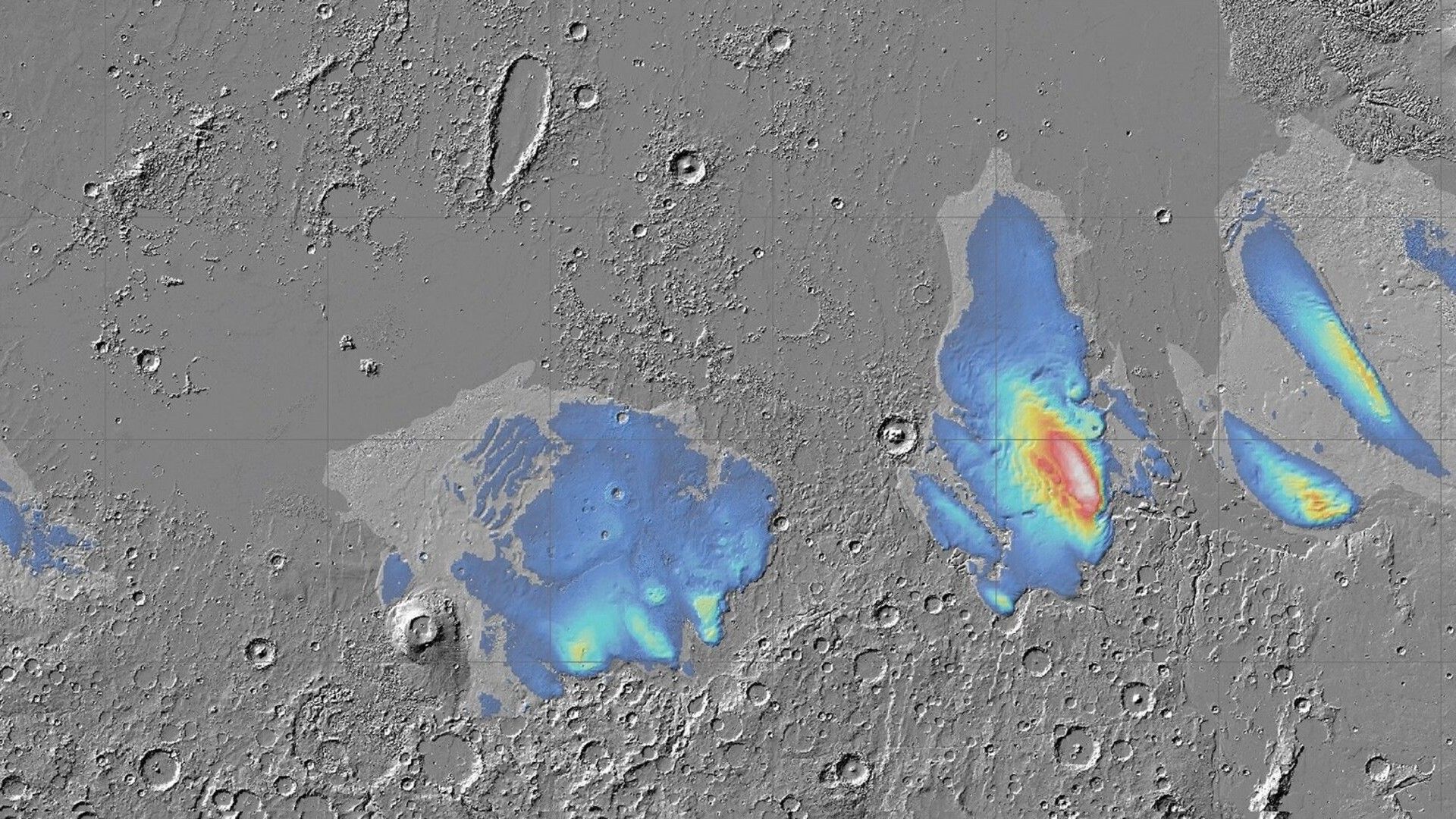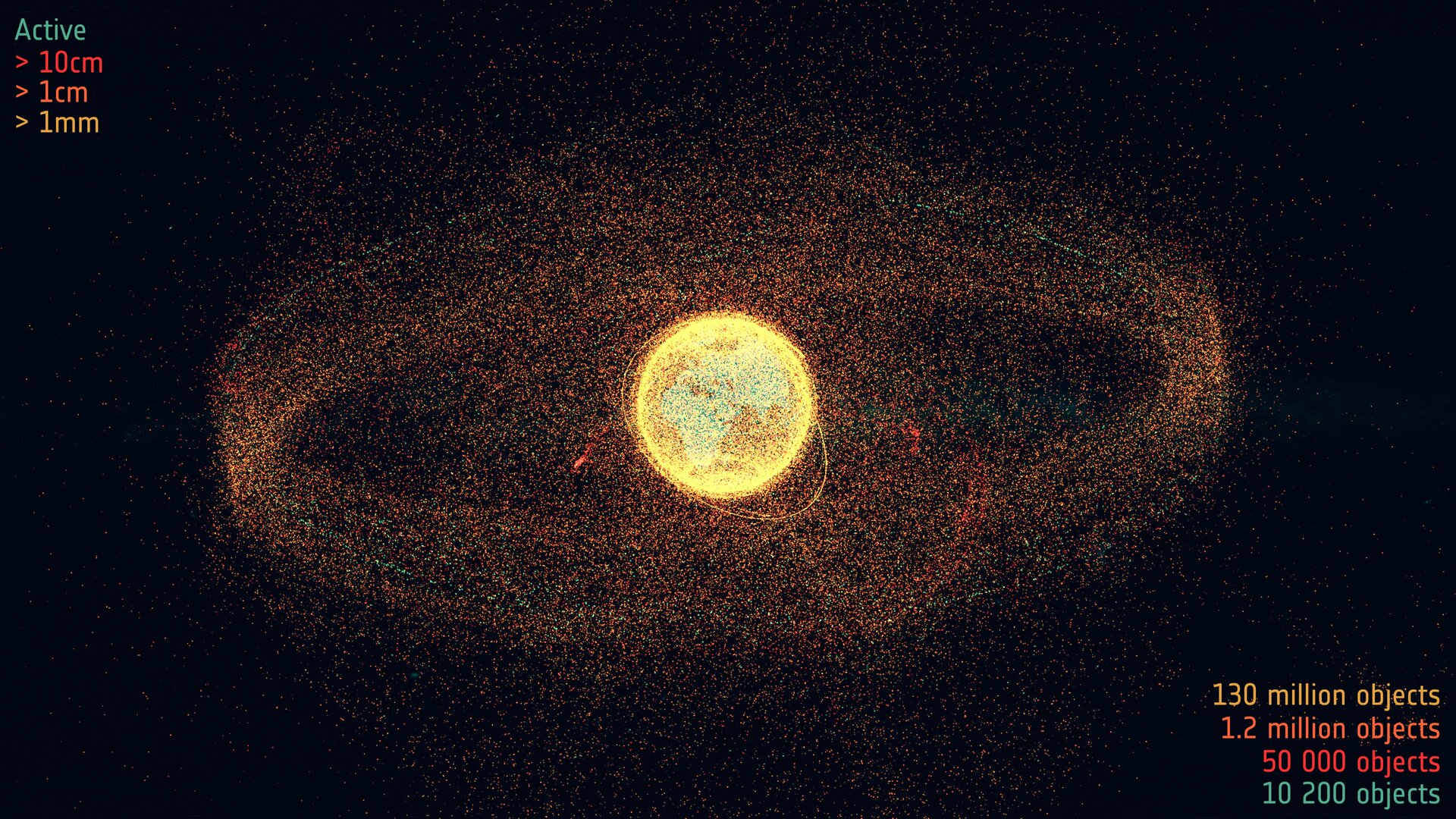Now Reading: Volcanic explosions on Mars may have left massive ice deposits at the Red Planet’s equator
-
01
Volcanic explosions on Mars may have left massive ice deposits at the Red Planet’s equator
Volcanic explosions on Mars may have left massive ice deposits at the Red Planet’s equator


Ancient explosive volcanic eruptions on Mars could help explain mysterious hints of buried ice from the Red Planet’s equator, a new study finds.
Previous research has found that the surface of Mars is rich in ice. Most of these deposits are located at its poles, just as seen on Earth. However, recently the Mars Odyssey and the ExoMars Trace Gas Orbiter spacecraft detected elevated levels of hydrogen near the ground on the equatorial regions of Mars. This ice could have lasted for long spans of time if buried under dust or volcanic debris, and still might exist below the surface of equatorial regions on the Red Planet.
Scientists are now wondering how this ice might have originated in this unexpected area. Prior work noted one possible origin of this ice was volcanism, which could disgorge large amounts of water vapor.
Using computer models of the Martian climate, researchers simulated explosive volcanic eruptions that previous research found happened on the Red Planet between 4.1 billion and 3 billion years ago. The models suggested that the eruptions released water vapor into high altitudes, which could have frozen in the cold Martian atmosphere and later fallen as ice. Just one single three-day eruption could have resulted in ice deposits up to 16 feet (5 meters) thick in the area right around a volcano, they found.
“Imagine how much ice could be delivered after repeated eruptions over the course of millions of years,” study lead author Saira Hamid, a planetary scientist at Arizona State University in Tempe, told Space.com. “Explosive volcanism could repeatedly seed low latitudes with ice and ash, producing buried or insulated ice deposits that help explain the excess hydrogen signals measured near the equator.”
Hamid cautioned that the hydrogen that spacecraft have detected around the Martian equator might not come from deposits of ice, but a range of minerals, among other possibilities. Future research can look for signs of ash-covered ice in the equatorial regions of Mars to support or refute the chances of ice there, she noted.
If these equatorial ice pockets exist on Mars, they could prove valuable for human explorers there. “Our work suggests volcanic regions may be high-priority targets,” Hamid noted.
In addition, volcanic eruptions could have spewed out sulfuric acid into the Martian atmosphere. This could have generated sunlight-reflecting aerosols that cooled the Red Planet, plunging it into a global winter that could in turn have let ice accumulate for a prolonged time.
But these ancient Martian volcanic eruptions might have also generated heat and chemicals “that could create short-lived habitable environments,” Hamid said. “Those regions might have offered transient but potentially life-supporting conditions. Understanding where and how these ice–ash deposits formed could help guide the search for past or even preserved biosignatures on Mars.”
The scientists detailed their findings October 14 in the journal Nature Communications.
Stay Informed With the Latest & Most Important News
Previous Post
Next Post
-
 012024 in Review: Highlights from NASA in Silicon Valley
012024 in Review: Highlights from NASA in Silicon Valley -
 02Panasonic Leica Summilux DG 15mm f/1.7 ASPH review
02Panasonic Leica Summilux DG 15mm f/1.7 ASPH review -
 03How New NASA, India Earth Satellite NISAR Will See Earth
03How New NASA, India Earth Satellite NISAR Will See Earth -
 04And Thus Begins A New Year For Life On Earth
04And Thus Begins A New Year For Life On Earth -
 05Astronomy Activation Ambassadors: A New Era
05Astronomy Activation Ambassadors: A New Era -
06SpaceX launch surge helps set new global launch record in 2024
-
 07From Polymerization-Enabled Folding and Assembly to Chemical Evolution: Key Processes for Emergence of Functional Polymers in the Origin of Life
07From Polymerization-Enabled Folding and Assembly to Chemical Evolution: Key Processes for Emergence of Functional Polymers in the Origin of Life




















